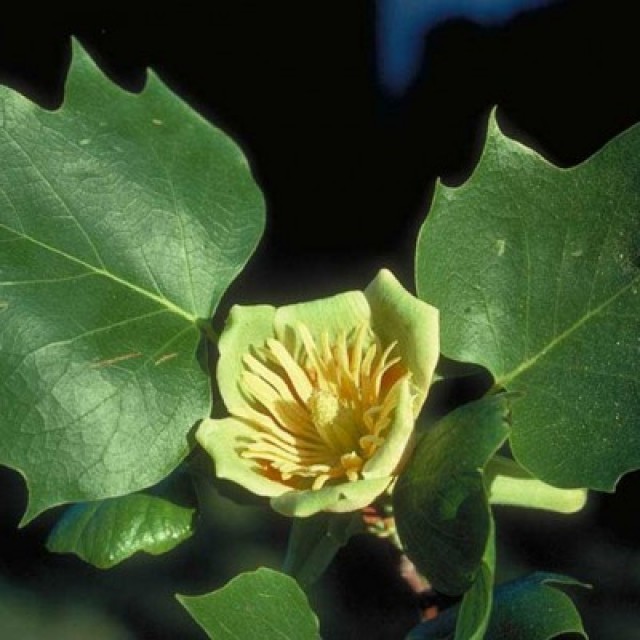COMMON NAME
tulip tree
SCIENTIFIC NAME
Liriodendron tulipifera
ALSO KNOWN AS
Tulip tree
Plant family
Magnolia (Magnoliaceae)
Plant group
Deciduous Trees and Shrubs
The leaves of the tulip poplar have a unique star-like or even tulip like shape and showy orange-yellow flowers similar in shape to tulips.
1264 reports
401+
OBSERVERS
1264+
OBSERVATIONS
Identification hints
The leaves of the tulip poplar have a unique star-like or even tulip like shape and showy orange-yellow flowers similar in shape to tulips.
Did you know?
First Nations used the inner bark medicinally as worming medicine, antiarthritic, cough syrup and cholera remedy. Pioneers hollowed out the massive trunk to make a long, lightweight canoe. One of the chief commercial hardwoods, Tulip Poplar is used for furniture, as well as for crates, toys, musical instruments, and pulpwood. This is a favorite nesting tree for birds and the flowers attract hummingbirds.
DISTRIBUTION IN TH U.S.
Alabama
,
Arkansas
,
Connecticut
,
Delaware
,
Florida
,
Georgia
,
Iowa
,
Illinois
,
Indiana
,
Kentucky
,
Louisiana
,
Massachusetts
,
Maryland
,
Michigan
,
Missouri
,
Mississippi
,
North Carolina
,
New Jersey
,
New York
,
Ohio
,
Pennsylvania
,
Rhode Island
,
South Carolina
,
Tennessee
,
Texas
,
Virginia
,
Vermont
,
West Virginia
HABITAT
Low, rich woods and stream banks
ATTRIBUTES
Leaves
Leaves are simple, smooth and waxy, 5 to 6 in long and wide (12 to 18 cm). They are a bright green on top and paler green beneath, and have downy veins. The leaf shape is very distinct, as the tip of each leaf is spread into two points giving the leaf tip a distinct "V" shape. Depending on the age and size of the leaf, there is at least one other pointed lobe per side, or many. Leaves turn bright yellow in fall.
Flowers
Showy, yellow-orange, tulip-like flowers are often missed because they are up 50 ft (15 m) or higher in the tops of trees. Flowers are cup shaped with six yellow petals in two rows. The petals are slightly fleshy in texture. Anthers are longer than the flowers and are also yellow. Flowers are erect and from the ground you will be able to see the dashes of orange at the base of each yellow petal. Flowers bloom from mid to late-spring (April through June).
Fruits
A narrow, light brown cone. The winged seeds fall throughout autumn, and the remaining cone axis remains on the tree throughout winter.
Bark
Brown and furrowed, but branches are smooth and almost shiny. New branches are slightly red, and mature to a dark grey, and finally brown.
See Menu
Budburst is a project of the
Chicago Botanic Garden
One of the treasures of the
Forest Preserves of Cook County
Creative Commons
BY-NC-SA 4.0
- 2021 Chicago Botanic Garden. All Rights Reserved.
- Terms of Use
- Privacy Policy
- Data Sharing and Citation Policies
- 2021 Chicago Botanic Garden. All Rights Reserved.



